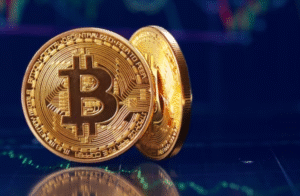$GC $DXY $SPX
#Gold #SpotGold #ISM #USMarkets #Economy #Inflation #InterestRates #Commodities #Trading #Stocks #FederalReserve #MarketUpdate
Spot gold surged above $2,922 per ounce following the latest data from the Institute for Supply Management (ISM), which reported that the U.S. Services PMI rose to 53.5 in February, indicating continued expansion in the service sector. The increase in activity suggests resilience in consumer demand and business conditions, reinforcing confidence in economic strength. However, a higher PMI reading, particularly alongside rising input prices, raises concerns about persistent inflationary pressures. This, in turn, could influence market expectations regarding the Federal Reserve’s monetary policy outlook. The immediate reaction in the markets saw gold rally sharply, driven by increased demand for the precious metal as a hedge against inflation and as a safe-haven asset amid potential shifts in central bank policy.
Gold’s price surge reflects broader concerns about inflation, as the ISM data also showed that the prices paid index remained elevated, signaling ongoing cost pressures. A rising services PMI typically indicates robust economic activity, but when coupled with increasing prices, it strengthens the case for the Fed to remain cautious about cutting interest rates too soon. Higher inflation expectations tend to support gold prices, as investors seek protection against a potential erosion of purchasing power. Additionally, the U.S. dollar index ($DXY) showed mixed movement in response to the report. A stronger services sector could provide support to the dollar, but market uncertainty surrounding future rate decisions may limit its gains, contributing to further interest in gold.
Equity markets, including the S&P 500 ($SPX), reacted with volatility as investors weighed the implications of the higher-than-expected services PMI. While economic strength is generally positive for corporate earnings, the concern over persistent inflation and the potential for a more hawkish Fed stance weighed on investor sentiment. Given recent market expectations for potential rate cuts later this year, the new data may prompt a reassessment of the timeline for monetary easing. Yields on U.S. Treasury bonds also saw upward pressure, as higher services sector activity suggests that the economy may not require aggressive rate cuts in the near term. Rising bond yields often create headwinds for stocks, leading to cautious trading.
Looking forward, market participants will closely monitor upcoming economic data, particularly inflation reports and statements from Federal Reserve officials. If inflation continues to show signs of persistence, the Fed may opt to maintain its current policy stance longer than previously expected, which could sustain gold’s upward momentum. Conversely, any signs of cooling inflationary pressures could provide relief to equity markets and weigh on gold prices. For now, gold remains a focal point for investors navigating the uncertainty over Federal Reserve policy direction and inflation trends, with its price movements closely tied to shifting macroeconomic expectations.







Comments are closed.